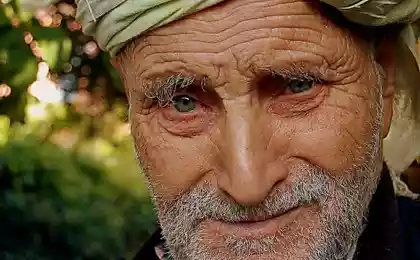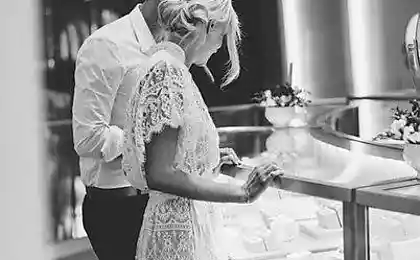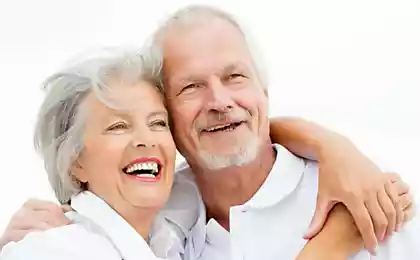405
Clinical Psychologist: What Happens to Us With Age
We publish the text of a lecture by clinical psychologist Ilya Pluzhnikov on personality aging from the point of view of neuropsychology - a science that, using the analysis of the brain, explains what happens to the personality, what styles of aging there are and why it is better to speak with the elderly in a low voice.
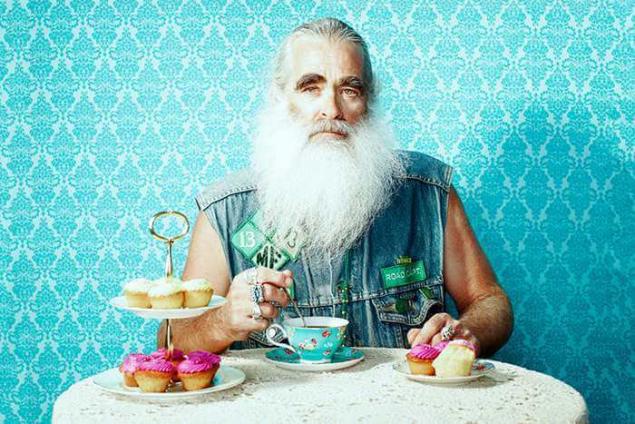
What is the ageing man and what is the developing man? In this lecture I will focus not on the biochemical and morphological aspects, but on the personality, the process of individual development, because it never stops. One should not think that after adolescence, a person goes to the plateau, as scientists call “acme”, the highest point of development, and then degrades. Aging is not degradation. This is a process of continuing development, very peculiar.
Normal aging, according to our psychological school, is a process of continuous, progressive, uneven, complex growth of various limitations. There are purely physiological: hearing decreases, there are specific forms of diseases that are not actually diseases, but there are normal symptoms of aging associated with movements, muscles, sensory systems, psychology and so on, and, of course, there are social restrictions that in the individual consciousness of an aging person are refracted and transformed into existential.
The unevenness of the process creates individual differences. Modern methods of scientific research, prone to statistical processing and quantitative analysis of data, unfortunately, do not help to reveal the essence of the mechanisms that lie behind it, because aging is extremely individual.
Why?
To put it bluntly, here's a baby. As soon as he is born, he immediately enters the society, where he is cared for, but nature is arranged in such a way that a program is laid in the genetics of a new person, which gives him a minimum range to survive.
Therefore, early ontogenesis, that is, early individual differences from birth to preschool age, is quite programmed. We know the rules: when a child should be able to hold the head, say the first word, what kind of words should these words be, when he should have phrase speech, when he should start walking, crawling, and so on.
If there are deviations in the standards, we say that it is abnormal, pathological, something needs to be done about it – the correction should be medical, because these programs are biological. In adulthood, development is more directed, social: a person shows his own activity and so on.
He reaches the third age, that is, to the age of aging, with a very serious baggage - knowledge, experience, experiences, psychotraumas, views, meanings, values. All this colossal baggage, of course, makes a lot of noise in the natural biological program.
Therefore, aging is individual because of individual experience. So we're not very good at finding biological causes using natural science. So all of the individual differences I'm going to give you are clinical. That is, collected not on patients, but through long-term, long-term observation, including by our department and myself.
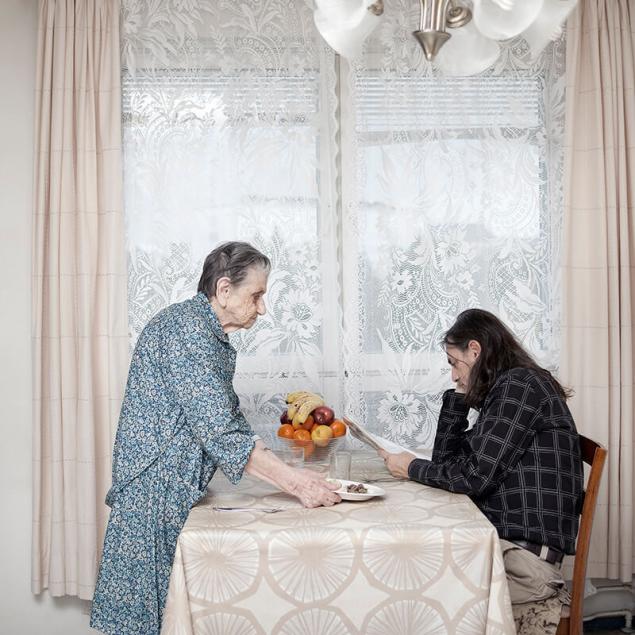
However, it is possible to distinguish individual differences, which we call style, variant or type, that is, to distinguish a certain typology of normal aging based on how the brain works.
In the 30-50s, a major Soviet researcher psychologist Alexander Romanovich Luria He discovered the science he called. neuropsychology. She was born in the Soviet Union and is accepted worldwide. Indeed, this is our achievement, one of the few that is truly ours.
Luria studies patients with local brain lesions, presenting various tests, shows that when certain structures are affected, certain symptoms of disorders of higher mental functions, such as memory, thinking, attention, speech, and so on, occur. He concluded.If you give the patient a certain test that will demonstrate certain violations of mental functions, these areas are responsible for the implementation of these mental functions.

A. R. Luria
In the 70-80s, a student of Alexander Romanovich Luria Natalia Korsakova begins working at the Scientific Center for Mental Health, where she is offered to use the methods developed by Luria to diagnose Alzheimer’s disease to understand how the brain is affected.
And indeed, by presenting these tests, the Luriev methods that were developed for people with brain tumors, she shows that patients with Alzheimer's develop very similar symptoms, similar to those that occur in patients with tumors of the parietal, frontal lobes, temporal, subcortical structures of the brain.
Korsakova concludes that in Alzheimer's disease and other forms of senile dementia, severe mental disorders of senile age, specific cognitive impairments are observed. This means that this pathological process, not tumor, but atrophic, spreads in each individual case with a different disease to certain areas of the brain. This is how the science of neurogerontopsychology is born.
Scientists are interested in what happens in old age in normal. After studying more than 300 healthy people between the ages of 50 and 100 who have never been to a doctor for mental health or neurological problems, Korsakova highlights a variety of neurocognitive styles, a typology of normal aging. It shows how aging we and our psyche in connection with the work of the brain. These data are indirectly confirmed by Western studies using neuroimaging, functional tomography, positron emission tomography and so on.
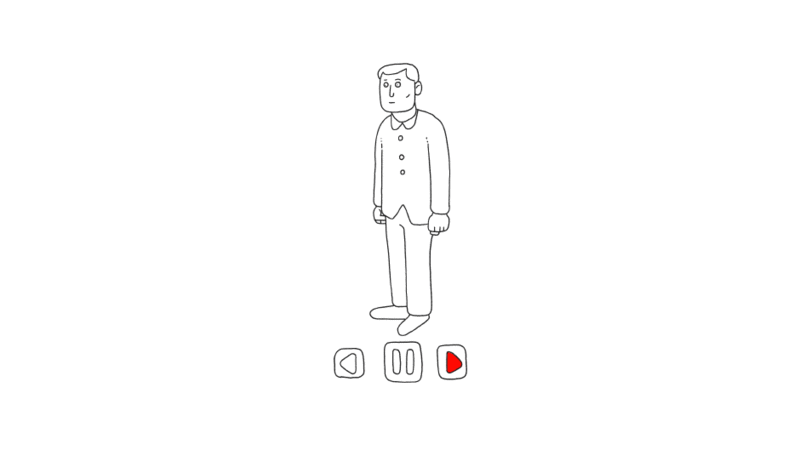
Normal aging is characterized by certain parameters, the main of which is individuality. This is not only an increase in restrictions, but also, most importantly, the actualization of compensatory strategies – strategies for coping with the constraints that have arisen.
They may be conscious: “Well, I know it’s time to write notes, I don’t remember,” or unconscious. Psychiatry changes qualitatively. It is believed that with aging, memory decreases, but it is important that normally there is a qualitative change in memory, the vector of its work changes. Not the desire to memorize, to assimilate the new, as in a young person, a child or an adult, but the vector back to memory, to a deeper appeal to experience, to the analysis of its deep layers.
For what?
To implement the main task of development - the transfer of meanings. Socio-psychological studies have shown that young teachers teach children differently than older teachers. Not because they have more experience, not because they give more examples, but because they convey values, meanings and thus fulfill the basic task of development in later life. Not a reception, a transfer. Not values, but value-oriented things.
What is aging phenomenologically?
First, Of course, this is a slowdown in the pace of activity. Latency increases, people in the third age begin to work more slowly. This slowdown is especially evident at the initial stage of activity. It is especially difficult to quickly retrieve information and link it. You need to be able to negotiate with your memory after 55 years, so that it gives out what you need.
Secondly, It starts as a single-channel system. If he reads a newspaper, the television no longer hears or thinks about things unrelated to that newspaper.
Third. As for the speech sphere, it is necessary to speak to an elderly person not only slowly, but also in a low voice. Not necessarily loud, although age-related hearing loss may also occur, but velvet baritone or even bass will be absorbed better than tenor and falsetto. It's a purely sensory thing, scientifically proven.
Fourth, tempo performance. Speech information can be absorbed more slowly than non-speech information. There is a certain imbalance, stealing the right hemisphere in favor of the left. The left hemisphere begins to work more intensely due to the fact that it may lose some right hemisphere functions. But nevertheless, it is not always fragmentary enough, so, for example, music is absorbed well, and listening to the songs of youth actualizes the deep layers of memories.
The tactile sphere comes to life literally, so people like to go through things, wipe the dust, so it is better for the elderly to give textured gifts, textured - this also actualizes the thresholds of memory layers.
Memory. Access to immediate memories, which has now happened, is becoming more restricted. Access to early memories of youth, youth and even childhood. They become brighter, more distinct. We remember everything, we just don’t always have access to it.
And finally, this Decreased ability to learn new things and difficulty setting creative tasks. Not because a person becomes weak-minded, but because there is not enough energy to sustain the creative process. Which, as you know from all the metaphors, should gush.
Types of normal ageing
This typology is based on the concept of Alexander Romanovich Luria about the structures of the functional blocks of the brain. On the basis of his numerous studies, he divided the brain into three blocks, not according to morphological structure, but according to the roles that brain structures play for the realization of higher mental functions.
Energy Neurocognitive Style of Ageing
The most common, universal. It is associated with a decrease in the functions of energy provision of mental activity: people become slower, they have the phenomenon of “on-off” – “on-off”.
That is, a person begins to read a book, it is difficult, does not go, closes, goes to the kitchen and helps his wife cook borscht, that is, is activated. These fluctuations can be observed quite gently, they should not disturb the adaptation. In vascular lesions of the brain, this effect can violate it. That is, a person may not cope with the task in the “off” state, and in the “on” state may become too excited. Cries and laughs. There are clinical examples.
In addition, this narrowing of the volume of activity, single-channel perception, inhibition of memory traces and fatigue are nonspecific characteristics of aging, not risk factors. Most importantly, the cerebral cortex works well. That is, a person can come up with himself, extract from past experience, plan, for example, that it will take him such time to go to the clinic, and to visit his grandchildren, such operations are needed; he can plan the day in a specific way. The inhibition, the inaccessibility of memories that are needed right now, means that you need to write down, and the person understands all this.
The risk factor that can lead a person to maladjustment is, of course, stress. Since subcortical structures are emotions, stress resistance, then ways to regulate your emotions become insufficient. That is, there can be emotional problems.
It's an aggravation of bodily ailments. The most malignant, which really knocks a person out of rut and puts him in a state of maladjustment, anxiety, depression, is the hip neck. Such a person needs special attention; perhaps professional psychological support. I’m not talking about cataracts and other purely age-related things – they, of course, also require special attention.
Spatial Neurocognitive Style of Ageing
The second type is a decrease in the ability to navigate in real and internal space. Already a specific type of aging, in which it becomes very difficult to holistically perceive different things. Reading even a short story and understanding what it is can be a challenge. You need to first read one paragraph, comprehend it, remember, take a breather, then the second and so on.
Technically you can read the story, the person will not be exhausted, but he will not understand it. And most importantly, it is “disadaptation” in a new space. Please note, this is not a spelling error. That is, a person is not lost at all, and it is difficult for him in the new space, he begins to grasp the right hand, thinking: “The right hand means I need to go to the right.”
They have a marker that's really programmed to say, "I'm writing with my right hand," so you have to navigate right. They can wander for a very long time, not in the sense that they are really lost, but because they have such difficulties in a new space. In an old familiar space, everything can be quite well.
That is, the risk factors here are habitat change, for example, emigration. Our colleagues, Russian psychologists abroad, once published articles in magazines devoted to Russian emigrants in France and the United States. They describe these phenomena on a very large scale, also in connection with the linguistic side. For example, the phenomenon of “pathological nostalgia”: an immigrant woman believed that she was in her Moscow apartment, saw people from that life. These were not hallucinations due to mental illness, but a temporary condition, stress, culture shock. It has to do with the right hemisphere.
It’s important to understand here that these kinds of things can be very similar to Alzheimer’s, but they need to be distinguished. Here's the statistics. Schizophrenia is 1%, but 10% is Alzheimer's disease, where 4% is early Alzheimer's. In our clinic, these are all 40-year-old women.
I remember the last case: 40 years old, a nurse and really serious symptoms associated with profound memory impairment. If you want to understand what it is, watch the amazing film “Still Alice” about early Alzheimer’s. With maximum certainty, it is shown what happens to a person, with deep psychologism, penetration into the essence of this painful state.
After 55-60 years, it is already a classic Alzheimer, and the late one is called senile (Latin “senile”). Scientists say it's genetically programmed. Unfortunately, there are no methods to identify a person’s risk of developing this disease before the disease has occurred. Genetic constellation leads to an imbalance of acetylcholine and other neuropeptides, which leads to the formation of Alzheimer's cells, that is, atrophy of nerve cells in certain regions, which leads to the fact that these cells do not work and the brain functions poorly.
Alzheimer's disease is not treated: all drugs that are prescribed are symptomatic and do not greatly improve the state of mental functions. And even more so, unfortunately, do not prevent further malignant development (after the onset of the disease, a person lives no more than 10 years).
This is gross exhaustion, that is, a person cannot work actively for 45 minutes, gross memory impairment, inability to remember material, violation of orientation in space, confusion, that is, a person may not understand where he is, on the street or at home.
You may have seen a grandfather in slippers on the street with a completely confused expression, who sometimes screams, tries to call for help. Of course, this is not a reason to diagnose him with Alzheimer’s disease, but this is a pathological condition that very often accompanies it.
Spatial disturbances come to the fore, that is, people cannot remember where the toilet is, where the kitchen is. But it is worth noting that their facade of personality persists, they experience this state, they are critical to it. Perhaps the whole tragedy lies in the fact that they realize that they are losing what constitutes their personality. Because, according to one of the founders of Russian psychology, Sergei Leonidovich Rubinstein, One of the central functions of memory is the structuring of personality. If memory breaks down, all our experience, the experience of communicating with our personality, that is, the personality goes away.
Regulatory Neurocognitive Style of Ageing
This is not yet a pathology, but a truly risky option, when the anterior parts of the large hemispheres are aging in the first place. There is a decrease in self-control. This is the most central symptom because the frontal lobes are involved. Luria calls the third functional block of the brain the block of programming, regulation and control of mental activity, so here regulation and control suffer primarily.
When they weaken a little, this is still the norm – what we call in everyday life “sedin in the beard, demon in the rib”: a man of 60-plus, and he believes that he as a young can do his job, behave like a young man, dress in torn jeans, walk with a player, say: “I’m Dima Bilan listening, I won’t listen to Shulzhenko with Utesov, I’m not so old yet.” There may be sexualization of behavior.
In the activity there may be problems with building plans, getting stuck on some moments, inflexibility. Apathetic, impaired and decreased motivation, which should still persist. Including motivation to transfer semantic value experience to other generations: “Well, I will call my grandson, he does not need me.” I'm going to get him. Failure, loneliness, and changing living conditions can all be risk factors. Emotional, brutal reactions may follow. In the face of stress, an elderly person may think, “What is it, my son came, he stole my passport?” I can't find my passport because he came, he wants to do something to me.” That is, delusions arise, but against the background of some stress.
The extreme case, the pathological prototype here, is Pick's disease, which is also a classic disease, the pole of Alzheimer's disease. If there is a facade of personality, and a person is aware and suffers from increasing cognitive impairment, then with Pick's disease (or, as it is now customary to say by the newfangled psychiatric classification, with frontotemporal dementia), the anterior parts of the cortex of the large hemispheres of the brain are dysfunctional.
Such patients are emotionally dull, passive, indifferent, inactive, lying down, doing nothing. They are impoverished in motor skills, writing, reading, counting and are not critical of what is happening, but they have euphoria, they are complacent, they can laugh. At the same time, they are absolutely inactive, empty, moral and ethical attitudes are lost.
There may be stereotypes, perseverations, that is, obsessive actions, and gross cognitive impairments, that is, violations of speech, grammatical structure, impoverishment of speech production, unwillingness to speak, build a detailed statement, and so on. First of all, and at the beginning, this emotional and personal dysfunction appears, at a late stage, some cognitive impairments already join. That's a maladjustment.

What prevents pathological aging?
People who have been engaged in intellectual work throughout their lives suffer from dementias of late age less. Separately developed technologies of gymnastics for the brain, that is, if there are already some limitations in the cognitive sphere, you can turn to psychologists who will develop an individual training program. Of course, I know old people who learn poetry themselves.
This is like a separate activity: get up, have breakfast, walk with the dog, then a couple of hours to learn a new poem, call a friend in the suburbs, read by heart, play chess on the phone, which is also good, you can see how e2-e4 relate, then you can eat again, then walk with the dog again. That is, it is a planned activity, where there is a cognitive and intellectual component to maintain tone. The tone is maintained in this way – through intellectual activity.
People who have consistently maintained physical activity have a reduced risk of late-life dementia due to the fact that metabolism works better, which means that atherosclerotic plaques do not form, sugar normalizes, and so on. That is, things associated purely with blood vessels no longer make a pathological contribution.
Mode. It has been shown that people who drink alcohol are more likely to suffer from dementias of late age. The so-called Mediterranean diet is useful: proteins, seafood, phosphorus, fresh vegetables. Those who have a clear sleep and wakefulness regimen get sick less.
And then there's pure psychology. People who experienced psychotraumas and with these psychotraumas did not go to a specialist, did not get rid of them, suffer more often. People who experienced a lot of but mini-stress, that is, who had active activity, who lived in constant stress, have less Alzheimer’s disease and other dementias.
Reflective people (who reflect on their inherent neurocognitive style) can use this. Like the borscht example. If he has a spatial version, but he remembers well what ingredients to put. And she has the first option, she does not remember this, but her frontal lobes are preserved, that is, she remembers the procedure: first you need to pass, then lay out and so on. And so they cook borscht together, because they realize that it is not possible to cook it together. That is, they really bring freshness to their relationship because they take it to a new level. They are working together in a way that did not exist.
Finally, the possibility of achieving development goals. Of course, you understand perfectly well: happy are those old people who have grandchildren. Loneliness gives rise to all these forms of maladjustment. Even if we have a lone third-aged person who has all this (i.e., he has been intellectually active, he is reflecting on what is happening to him), then he will be able to find strategies for compensation through purely social things like clubs or social programs.
P.S. And remember, just changing our consumption – together we change the world!
Join us on Facebook, VKontakte, Odnoklassniki
Source: special.theoryandpractice.ru/oldness-3

What is the ageing man and what is the developing man? In this lecture I will focus not on the biochemical and morphological aspects, but on the personality, the process of individual development, because it never stops. One should not think that after adolescence, a person goes to the plateau, as scientists call “acme”, the highest point of development, and then degrades. Aging is not degradation. This is a process of continuing development, very peculiar.
Normal aging, according to our psychological school, is a process of continuous, progressive, uneven, complex growth of various limitations. There are purely physiological: hearing decreases, there are specific forms of diseases that are not actually diseases, but there are normal symptoms of aging associated with movements, muscles, sensory systems, psychology and so on, and, of course, there are social restrictions that in the individual consciousness of an aging person are refracted and transformed into existential.
The unevenness of the process creates individual differences. Modern methods of scientific research, prone to statistical processing and quantitative analysis of data, unfortunately, do not help to reveal the essence of the mechanisms that lie behind it, because aging is extremely individual.
Why?
To put it bluntly, here's a baby. As soon as he is born, he immediately enters the society, where he is cared for, but nature is arranged in such a way that a program is laid in the genetics of a new person, which gives him a minimum range to survive.
Therefore, early ontogenesis, that is, early individual differences from birth to preschool age, is quite programmed. We know the rules: when a child should be able to hold the head, say the first word, what kind of words should these words be, when he should have phrase speech, when he should start walking, crawling, and so on.
If there are deviations in the standards, we say that it is abnormal, pathological, something needs to be done about it – the correction should be medical, because these programs are biological. In adulthood, development is more directed, social: a person shows his own activity and so on.
He reaches the third age, that is, to the age of aging, with a very serious baggage - knowledge, experience, experiences, psychotraumas, views, meanings, values. All this colossal baggage, of course, makes a lot of noise in the natural biological program.
Therefore, aging is individual because of individual experience. So we're not very good at finding biological causes using natural science. So all of the individual differences I'm going to give you are clinical. That is, collected not on patients, but through long-term, long-term observation, including by our department and myself.

However, it is possible to distinguish individual differences, which we call style, variant or type, that is, to distinguish a certain typology of normal aging based on how the brain works.
In the 30-50s, a major Soviet researcher psychologist Alexander Romanovich Luria He discovered the science he called. neuropsychology. She was born in the Soviet Union and is accepted worldwide. Indeed, this is our achievement, one of the few that is truly ours.
Luria studies patients with local brain lesions, presenting various tests, shows that when certain structures are affected, certain symptoms of disorders of higher mental functions, such as memory, thinking, attention, speech, and so on, occur. He concluded.If you give the patient a certain test that will demonstrate certain violations of mental functions, these areas are responsible for the implementation of these mental functions.

A. R. Luria
In the 70-80s, a student of Alexander Romanovich Luria Natalia Korsakova begins working at the Scientific Center for Mental Health, where she is offered to use the methods developed by Luria to diagnose Alzheimer’s disease to understand how the brain is affected.
And indeed, by presenting these tests, the Luriev methods that were developed for people with brain tumors, she shows that patients with Alzheimer's develop very similar symptoms, similar to those that occur in patients with tumors of the parietal, frontal lobes, temporal, subcortical structures of the brain.
Korsakova concludes that in Alzheimer's disease and other forms of senile dementia, severe mental disorders of senile age, specific cognitive impairments are observed. This means that this pathological process, not tumor, but atrophic, spreads in each individual case with a different disease to certain areas of the brain. This is how the science of neurogerontopsychology is born.
Scientists are interested in what happens in old age in normal. After studying more than 300 healthy people between the ages of 50 and 100 who have never been to a doctor for mental health or neurological problems, Korsakova highlights a variety of neurocognitive styles, a typology of normal aging. It shows how aging we and our psyche in connection with the work of the brain. These data are indirectly confirmed by Western studies using neuroimaging, functional tomography, positron emission tomography and so on.

Normal aging is characterized by certain parameters, the main of which is individuality. This is not only an increase in restrictions, but also, most importantly, the actualization of compensatory strategies – strategies for coping with the constraints that have arisen.
They may be conscious: “Well, I know it’s time to write notes, I don’t remember,” or unconscious. Psychiatry changes qualitatively. It is believed that with aging, memory decreases, but it is important that normally there is a qualitative change in memory, the vector of its work changes. Not the desire to memorize, to assimilate the new, as in a young person, a child or an adult, but the vector back to memory, to a deeper appeal to experience, to the analysis of its deep layers.
For what?
To implement the main task of development - the transfer of meanings. Socio-psychological studies have shown that young teachers teach children differently than older teachers. Not because they have more experience, not because they give more examples, but because they convey values, meanings and thus fulfill the basic task of development in later life. Not a reception, a transfer. Not values, but value-oriented things.
What is aging phenomenologically?
First, Of course, this is a slowdown in the pace of activity. Latency increases, people in the third age begin to work more slowly. This slowdown is especially evident at the initial stage of activity. It is especially difficult to quickly retrieve information and link it. You need to be able to negotiate with your memory after 55 years, so that it gives out what you need.
Secondly, It starts as a single-channel system. If he reads a newspaper, the television no longer hears or thinks about things unrelated to that newspaper.
Third. As for the speech sphere, it is necessary to speak to an elderly person not only slowly, but also in a low voice. Not necessarily loud, although age-related hearing loss may also occur, but velvet baritone or even bass will be absorbed better than tenor and falsetto. It's a purely sensory thing, scientifically proven.
Fourth, tempo performance. Speech information can be absorbed more slowly than non-speech information. There is a certain imbalance, stealing the right hemisphere in favor of the left. The left hemisphere begins to work more intensely due to the fact that it may lose some right hemisphere functions. But nevertheless, it is not always fragmentary enough, so, for example, music is absorbed well, and listening to the songs of youth actualizes the deep layers of memories.
The tactile sphere comes to life literally, so people like to go through things, wipe the dust, so it is better for the elderly to give textured gifts, textured - this also actualizes the thresholds of memory layers.
Memory. Access to immediate memories, which has now happened, is becoming more restricted. Access to early memories of youth, youth and even childhood. They become brighter, more distinct. We remember everything, we just don’t always have access to it.
And finally, this Decreased ability to learn new things and difficulty setting creative tasks. Not because a person becomes weak-minded, but because there is not enough energy to sustain the creative process. Which, as you know from all the metaphors, should gush.
Types of normal ageing
This typology is based on the concept of Alexander Romanovich Luria about the structures of the functional blocks of the brain. On the basis of his numerous studies, he divided the brain into three blocks, not according to morphological structure, but according to the roles that brain structures play for the realization of higher mental functions.
Energy Neurocognitive Style of Ageing
The most common, universal. It is associated with a decrease in the functions of energy provision of mental activity: people become slower, they have the phenomenon of “on-off” – “on-off”.
That is, a person begins to read a book, it is difficult, does not go, closes, goes to the kitchen and helps his wife cook borscht, that is, is activated. These fluctuations can be observed quite gently, they should not disturb the adaptation. In vascular lesions of the brain, this effect can violate it. That is, a person may not cope with the task in the “off” state, and in the “on” state may become too excited. Cries and laughs. There are clinical examples.
In addition, this narrowing of the volume of activity, single-channel perception, inhibition of memory traces and fatigue are nonspecific characteristics of aging, not risk factors. Most importantly, the cerebral cortex works well. That is, a person can come up with himself, extract from past experience, plan, for example, that it will take him such time to go to the clinic, and to visit his grandchildren, such operations are needed; he can plan the day in a specific way. The inhibition, the inaccessibility of memories that are needed right now, means that you need to write down, and the person understands all this.
The risk factor that can lead a person to maladjustment is, of course, stress. Since subcortical structures are emotions, stress resistance, then ways to regulate your emotions become insufficient. That is, there can be emotional problems.
It's an aggravation of bodily ailments. The most malignant, which really knocks a person out of rut and puts him in a state of maladjustment, anxiety, depression, is the hip neck. Such a person needs special attention; perhaps professional psychological support. I’m not talking about cataracts and other purely age-related things – they, of course, also require special attention.
Spatial Neurocognitive Style of Ageing
The second type is a decrease in the ability to navigate in real and internal space. Already a specific type of aging, in which it becomes very difficult to holistically perceive different things. Reading even a short story and understanding what it is can be a challenge. You need to first read one paragraph, comprehend it, remember, take a breather, then the second and so on.
Technically you can read the story, the person will not be exhausted, but he will not understand it. And most importantly, it is “disadaptation” in a new space. Please note, this is not a spelling error. That is, a person is not lost at all, and it is difficult for him in the new space, he begins to grasp the right hand, thinking: “The right hand means I need to go to the right.”
They have a marker that's really programmed to say, "I'm writing with my right hand," so you have to navigate right. They can wander for a very long time, not in the sense that they are really lost, but because they have such difficulties in a new space. In an old familiar space, everything can be quite well.
That is, the risk factors here are habitat change, for example, emigration. Our colleagues, Russian psychologists abroad, once published articles in magazines devoted to Russian emigrants in France and the United States. They describe these phenomena on a very large scale, also in connection with the linguistic side. For example, the phenomenon of “pathological nostalgia”: an immigrant woman believed that she was in her Moscow apartment, saw people from that life. These were not hallucinations due to mental illness, but a temporary condition, stress, culture shock. It has to do with the right hemisphere.
It’s important to understand here that these kinds of things can be very similar to Alzheimer’s, but they need to be distinguished. Here's the statistics. Schizophrenia is 1%, but 10% is Alzheimer's disease, where 4% is early Alzheimer's. In our clinic, these are all 40-year-old women.
I remember the last case: 40 years old, a nurse and really serious symptoms associated with profound memory impairment. If you want to understand what it is, watch the amazing film “Still Alice” about early Alzheimer’s. With maximum certainty, it is shown what happens to a person, with deep psychologism, penetration into the essence of this painful state.
After 55-60 years, it is already a classic Alzheimer, and the late one is called senile (Latin “senile”). Scientists say it's genetically programmed. Unfortunately, there are no methods to identify a person’s risk of developing this disease before the disease has occurred. Genetic constellation leads to an imbalance of acetylcholine and other neuropeptides, which leads to the formation of Alzheimer's cells, that is, atrophy of nerve cells in certain regions, which leads to the fact that these cells do not work and the brain functions poorly.
Alzheimer's disease is not treated: all drugs that are prescribed are symptomatic and do not greatly improve the state of mental functions. And even more so, unfortunately, do not prevent further malignant development (after the onset of the disease, a person lives no more than 10 years).
This is gross exhaustion, that is, a person cannot work actively for 45 minutes, gross memory impairment, inability to remember material, violation of orientation in space, confusion, that is, a person may not understand where he is, on the street or at home.
You may have seen a grandfather in slippers on the street with a completely confused expression, who sometimes screams, tries to call for help. Of course, this is not a reason to diagnose him with Alzheimer’s disease, but this is a pathological condition that very often accompanies it.
Spatial disturbances come to the fore, that is, people cannot remember where the toilet is, where the kitchen is. But it is worth noting that their facade of personality persists, they experience this state, they are critical to it. Perhaps the whole tragedy lies in the fact that they realize that they are losing what constitutes their personality. Because, according to one of the founders of Russian psychology, Sergei Leonidovich Rubinstein, One of the central functions of memory is the structuring of personality. If memory breaks down, all our experience, the experience of communicating with our personality, that is, the personality goes away.
Regulatory Neurocognitive Style of Ageing
This is not yet a pathology, but a truly risky option, when the anterior parts of the large hemispheres are aging in the first place. There is a decrease in self-control. This is the most central symptom because the frontal lobes are involved. Luria calls the third functional block of the brain the block of programming, regulation and control of mental activity, so here regulation and control suffer primarily.
When they weaken a little, this is still the norm – what we call in everyday life “sedin in the beard, demon in the rib”: a man of 60-plus, and he believes that he as a young can do his job, behave like a young man, dress in torn jeans, walk with a player, say: “I’m Dima Bilan listening, I won’t listen to Shulzhenko with Utesov, I’m not so old yet.” There may be sexualization of behavior.
In the activity there may be problems with building plans, getting stuck on some moments, inflexibility. Apathetic, impaired and decreased motivation, which should still persist. Including motivation to transfer semantic value experience to other generations: “Well, I will call my grandson, he does not need me.” I'm going to get him. Failure, loneliness, and changing living conditions can all be risk factors. Emotional, brutal reactions may follow. In the face of stress, an elderly person may think, “What is it, my son came, he stole my passport?” I can't find my passport because he came, he wants to do something to me.” That is, delusions arise, but against the background of some stress.
The extreme case, the pathological prototype here, is Pick's disease, which is also a classic disease, the pole of Alzheimer's disease. If there is a facade of personality, and a person is aware and suffers from increasing cognitive impairment, then with Pick's disease (or, as it is now customary to say by the newfangled psychiatric classification, with frontotemporal dementia), the anterior parts of the cortex of the large hemispheres of the brain are dysfunctional.
Such patients are emotionally dull, passive, indifferent, inactive, lying down, doing nothing. They are impoverished in motor skills, writing, reading, counting and are not critical of what is happening, but they have euphoria, they are complacent, they can laugh. At the same time, they are absolutely inactive, empty, moral and ethical attitudes are lost.
There may be stereotypes, perseverations, that is, obsessive actions, and gross cognitive impairments, that is, violations of speech, grammatical structure, impoverishment of speech production, unwillingness to speak, build a detailed statement, and so on. First of all, and at the beginning, this emotional and personal dysfunction appears, at a late stage, some cognitive impairments already join. That's a maladjustment.

What prevents pathological aging?
People who have been engaged in intellectual work throughout their lives suffer from dementias of late age less. Separately developed technologies of gymnastics for the brain, that is, if there are already some limitations in the cognitive sphere, you can turn to psychologists who will develop an individual training program. Of course, I know old people who learn poetry themselves.
This is like a separate activity: get up, have breakfast, walk with the dog, then a couple of hours to learn a new poem, call a friend in the suburbs, read by heart, play chess on the phone, which is also good, you can see how e2-e4 relate, then you can eat again, then walk with the dog again. That is, it is a planned activity, where there is a cognitive and intellectual component to maintain tone. The tone is maintained in this way – through intellectual activity.
People who have consistently maintained physical activity have a reduced risk of late-life dementia due to the fact that metabolism works better, which means that atherosclerotic plaques do not form, sugar normalizes, and so on. That is, things associated purely with blood vessels no longer make a pathological contribution.
Mode. It has been shown that people who drink alcohol are more likely to suffer from dementias of late age. The so-called Mediterranean diet is useful: proteins, seafood, phosphorus, fresh vegetables. Those who have a clear sleep and wakefulness regimen get sick less.
And then there's pure psychology. People who experienced psychotraumas and with these psychotraumas did not go to a specialist, did not get rid of them, suffer more often. People who experienced a lot of but mini-stress, that is, who had active activity, who lived in constant stress, have less Alzheimer’s disease and other dementias.
Reflective people (who reflect on their inherent neurocognitive style) can use this. Like the borscht example. If he has a spatial version, but he remembers well what ingredients to put. And she has the first option, she does not remember this, but her frontal lobes are preserved, that is, she remembers the procedure: first you need to pass, then lay out and so on. And so they cook borscht together, because they realize that it is not possible to cook it together. That is, they really bring freshness to their relationship because they take it to a new level. They are working together in a way that did not exist.
Finally, the possibility of achieving development goals. Of course, you understand perfectly well: happy are those old people who have grandchildren. Loneliness gives rise to all these forms of maladjustment. Even if we have a lone third-aged person who has all this (i.e., he has been intellectually active, he is reflecting on what is happening to him), then he will be able to find strategies for compensation through purely social things like clubs or social programs.
P.S. And remember, just changing our consumption – together we change the world!
Join us on Facebook, VKontakte, Odnoklassniki
Source: special.theoryandpractice.ru/oldness-3

